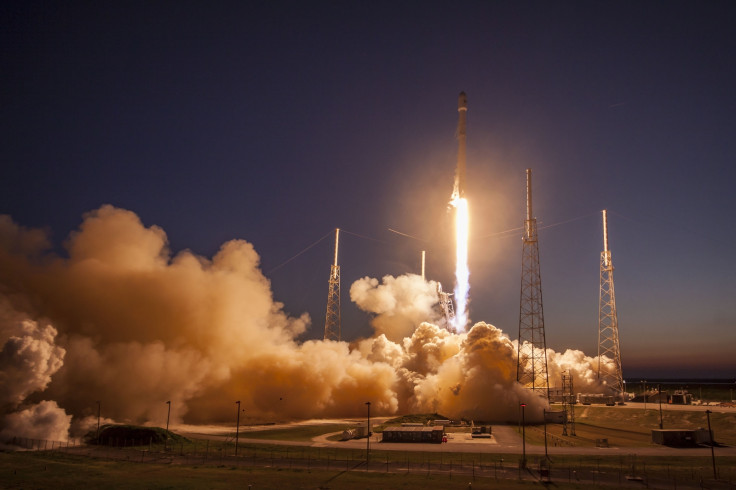SpaceX will launch its 12th resupply mission to the International Space Station on 13 August
The launch will kick off a busy month for Nasa.

SpaceX will launch its next delivery of supplies and science experiments to the International Space Station from the historic launch pad 39A at the Kennedy Space Center in Florida on 13 August, Nasa said this week. The Elon Musk-owned company will send an unmanned Dragon spacecraft filled with nearly 6,000 pounds of equipment, supplies and over 250 science and research experiments aboard a Falcon 9 rocket.
The launch will be SpaceX's 12th commercial resupply mission to the orbiting laboratory under a Nasa Commercial Resupply Services contract worth over $3bn (£2.26bn). SpaceX will also attempt to land the Falcon 9 first stage at Cape Canaveral Air Force Station's Landing Zone 1 shortly after liftoff.
Besides crew supplies and equipment, the upcoming CRS-12 mission will also send several science investigations including one that builds on the successful Cosmic Ray Energetics and Mass (CREAM) experiment on board the ISS that gathers data on the charges of cosmic rays and attempts to "extend the energy reach of direct measurements of cosmic rays to the highest energy possible to probe their origin, acceleration and propagation".
Liftoff for the SpaceX Nasa resupply CRS-12 mission is targeted for approximately 12.56pm EST.
The launch will also mark the beginning of a busy month for Nasa.
On Sunday, 20 August, United Launch Alliance is scheduled to launch an Atlas V rocket carrying Nasa's new Tracking and Data Relay Satellite called TDRS-M.
Starting 21 August, researchers from Nasa's Armstrong Flight Research Center and Langley Research Center in Virginia will begin conducting its second series of tests as part of the Sonic Booms in Atmospheric Turbulence flights, or SonicBAT. The two-week investigation will help researchers better understand how low-altitude atmospheric turbulence affects sonic booms, which are produced when an aircraft flies at supersonic speeds or faster than the speed of sound.
"Turbulence can make sonic booms quieter, or it can make them louder," Ed Haering, SonicBAT's principal investigator at Armstrong explained in a statement. "Last summer we tested in the hot, dry climate of Edwards Air Force Base. We know that humidity can make sonic booms louder, so we need to test some place wetter, and Kennedy fits that bill."
"Residents might hear a distant sound similar to a rumble of thunder. If the actual winds at the time of our tests are much different from predicted, they might hear a boom sound like those heard when the space shuttle landed. That may be startling, but there is no reason to be alarmed."
Nasa hopes the research will help advance the development of future quiet supersonic flight technology and aircraft.
The following week, Orbital ATK's Minotaur IV rocket is set to liftoff from Launch Complex 41 with a surveillance satellite for the Air Force's Operationally Responsibe Space programme on Friday, 25 August.
Next @SpaceX #Dragon spacecraft carrying cargo & science to @Space_Station is targeted for Aug 13 from @NASAKennedy: https://t.co/3c5Pd81Rhm pic.twitter.com/vefCNCqd7e
— NASA (@NASA) August 2, 2017
© Copyright IBTimes 2025. All rights reserved.





















